FREE Standard Shipping On All Orders $100 or More!*
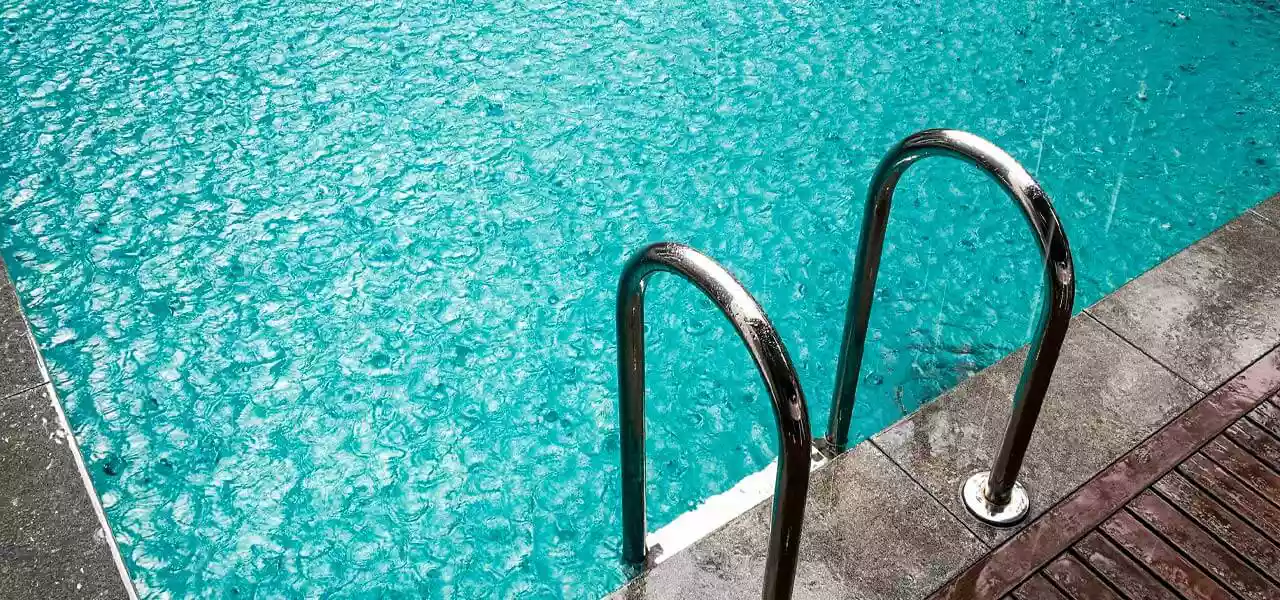
Heavy Rains & Swimming Pools
Whether you're dealing with a summer monsoon or surprise downpour, rainstorms happen year-round and can be a cause for concern among pool owners. If you're wondering how heavy rains can be problematic for swimming pools, you're in the right place! While rain might appear pure and clean, it is actually a carrier for contaminants, and can throw off water chemistry.
Excess Water in Your Pool
If you find yourself dealing with inches of precipitation, you may need to lower the water level in your pool to maintain proper skimmer function. Excess water in the pool that reaches the brim can also bring in extra contamination from surrounding planters and deck area flooding during a heavy rain.
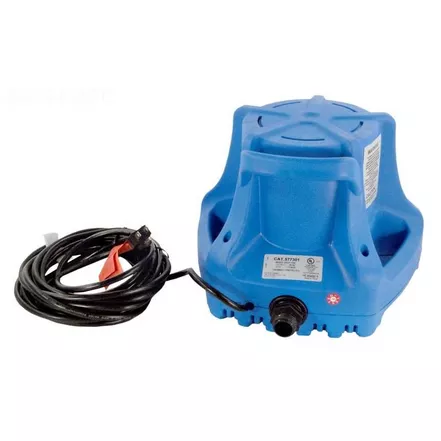
For most pools with a sand or D.E. filter, the simplest way to lower the water level is to either backwash the filter or put the multiport valve into the "waste" position, and roll out the backwash hose. If you have a slide (push-pull) valve, backwash the filter to lower the water level. Just make sure you don't lower the water level too much, or you'll risk damaging your pump! The water level should stay around halfway up the mouth of the skimmer at all times.
Some pools have a hose spigot plumbed after the pump or on the filter valve, which means you can connect a garden hose to lower water level. Alternatively, you can use a submersible pump, aka a pool cover pump, to keep the pool from overflowing.
Finally, there is the siphon method. A pool vacuum hose works best. Prime the hose in the pool to fill it full of water, then attach a vacuum head or use a heavy item to hold the hose on the first or second step or a few rungs down on the pool ladder. Cap the other end of the hose with your palm, and quickly pull the hose away from the pool and a few feet below the level of the pool water. Uncap the hose at ground level and let it flow! Again, keep an eye on it so the water level doesn't drop too much!
Contaminants in Your Pool
Heavy rains bring all kinds of contaminants into your pool, whether directly from the rain or from runoff caused by flooding. Testing your pool water before and after a rainstorm will help you stay on top of any chemical imbalances that may result in your pool.
From Runoff
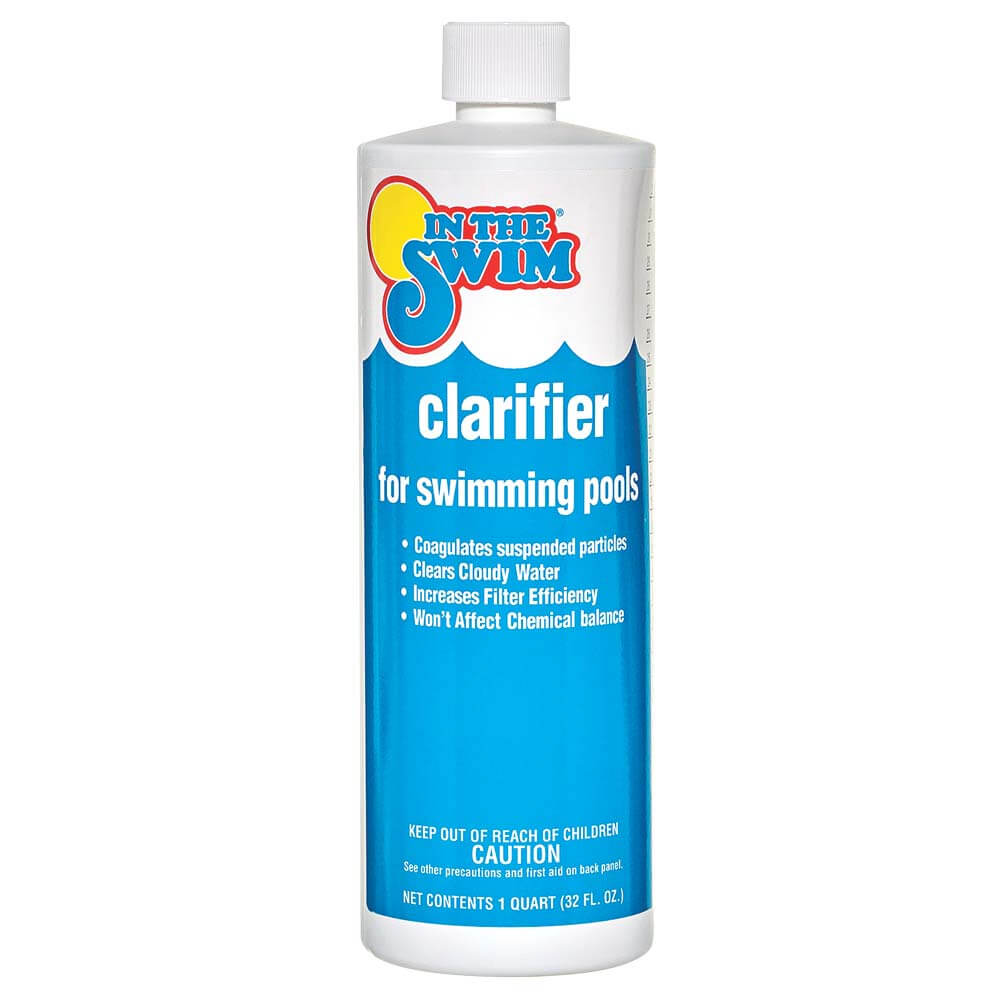
When a backyard pool gets 5 inches of rain in a few hours, flooding can result. If surrounding planters, lawns, or even concrete pool decks overflow into the pool, just a handful of soil or mulch can elevate phosphate levels and create problems with cloudy water and algae.
In severe cases, a pool can fill with a thick layer of silty mud, and all sorts of debris. Use leaf rakes to remove the big stuff, followed by a slow vacuum to waste. Follow up with a good daily pool brushing, and near-continuous filtering. Clarifiers and flocculants can be used to speed up the process considerably. If you have a sand filter, using these kinds of chemicals may be necessary to improve filtration efficiency and get rid of the finest silt and debris.
As the water clears, use a phosphate remover chemical like PHOSfree or SeaKlear to naturally eliminate phosphates in your pool. Just pour it into balanced pool water, run the filter for 24 hours, then backwash.
From the Rain
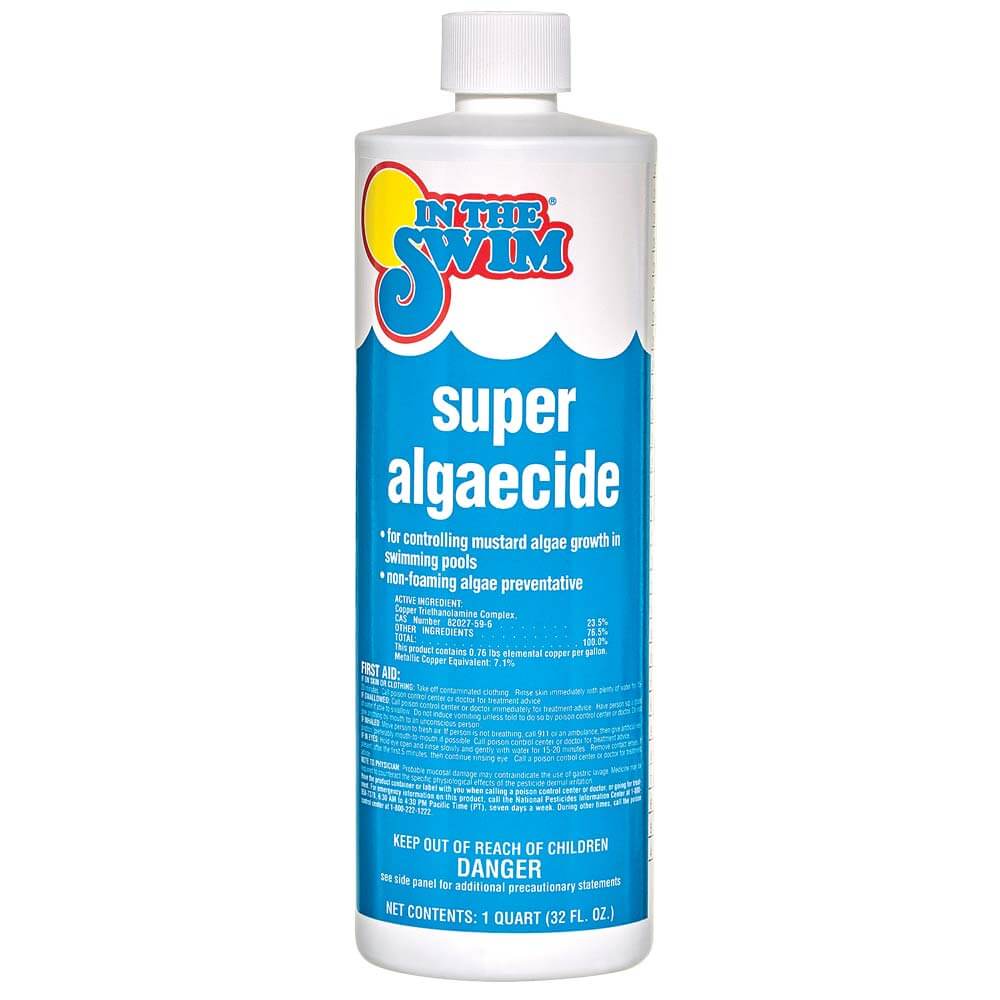
Rain is pure, distilled water, but as it falls through the air, it picks up dust, pollen, pollutants, oils, and even algae spores. If you have tall trees overhanging the pool, rain will wash them clean, right into your pool, adding phosphates, algae spores, and other organic gunk. Add algaecide before a storm to help battle incoming invaders as they enter the pool.
Heavy rains can also impact your pool's water balance, with the greatest impact on the pH and Total Alkalinity. Acid rain falling through smoggy summer air hits your pool at a very low pH, reducing pool pH and Total Alkalinity. Be sure to test your water with a complete test kit, then balance as needed. Imbalanced water can cause all sorts of problems in your pool, including stains and scale, corrosion, and water quality issues like algae and cloudy water.
Wind & Debris
Strong winds during a rainstorm can be vehicles for bringing contaminants and debris into your pool. If the wind is intense enough, anything from garbage to organic material can be picked up and thrown into your pool water.
Before a Storm Hits
Store all loose toys, furniture, and cleaning equipment that could become airborne in high winds. But as tempting as it may be, DON'T cover the pool — the cover can be severely damaged in a heavy storm.
After a Storm Hits
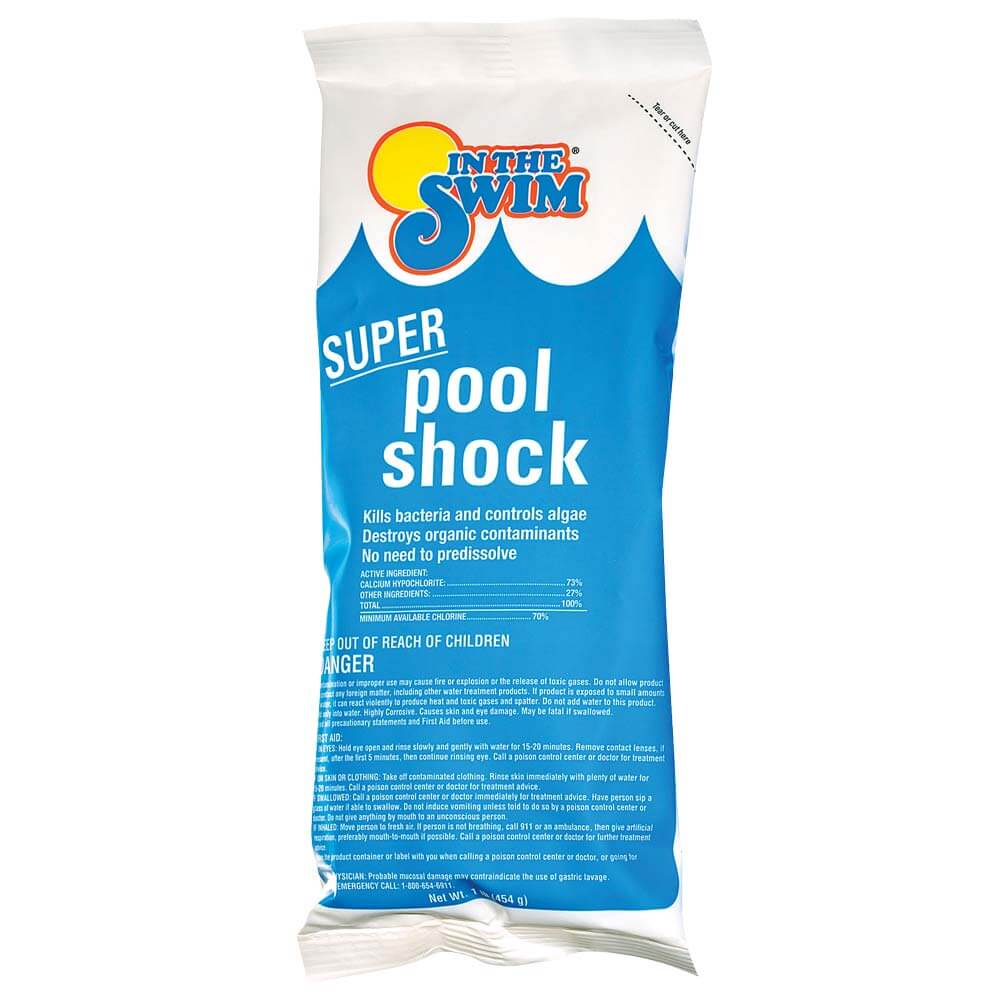
Clean the pool, lower the water level to normal operating levels, check the water balance and chlorine level, adding sanitizer if needed. In most cases, we strongly recommend shocking the pool following any contamination event — including storms. If needed, superchlorinate the water with some pool shock, and run the pump to circulate and filter the water.
Most of the time, you'll need to run the pump for at least 24 hours, or until the water is clear and healthy once again. It's best to remove leaves and debris from the pool first, and ensure pH levels and other aspects of water chemistry are within the proper range before shocking the pool.
Flooded Pool Equipment
Keep the pump running unless flood waters threaten to submerge your equipment. In those instances, if you can turn off the power and safely remove the pump, store it indoors. Keep in mind that if the pump motor is submerged or becomes waterlogged, it will likely need to be replaced once flood waters recede.
Regular rain falling on your pool equipment will usually not cause any harm, even if it lasts for days. But if you're concerned, place a cover over your filter pump. Flooding due to heavy rain is the real problem. Sand bagging your pool equipment could save you from replacing the pump or motor if flood waters rise above the equipment pad. If you have any other electrical components, such as a heat pump, salt cell, or other electrically-powered equipment, inspect it thoroughly before restoring power. When in doubt, it never hurts to seek the help of a pool service professional and/or an electrician.
Poor Water Drainage
If your pool has a tendency to flood in some areas of the pool deck, and if that runoff heads toward the pool, it needs to be fixed. Pool decks should slope 1/4" down for every foot away from the pool. This helps ensure storm runoff heads to the lawn or surrounding landscape, not in the pool.
Look at the way water moves around the pool. If needed, rework the land to create natural swales to direct and slow rainwater runoff. You can also install drains and drain pipes, or install French drains in gravel around the pool deck. These drains should always be sloped to a downhill location, away from the pool and the pool equipment.
Heavy rains and storms are unpredictable and can be vicious. But with the right steps, you can protect your pool from any severe weather event on the horizon!